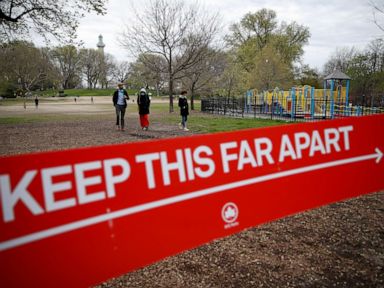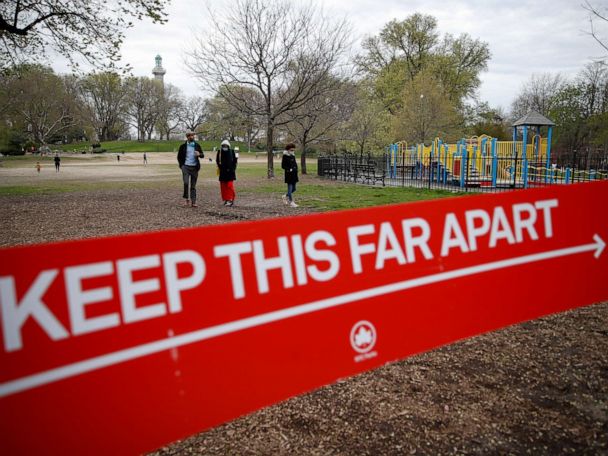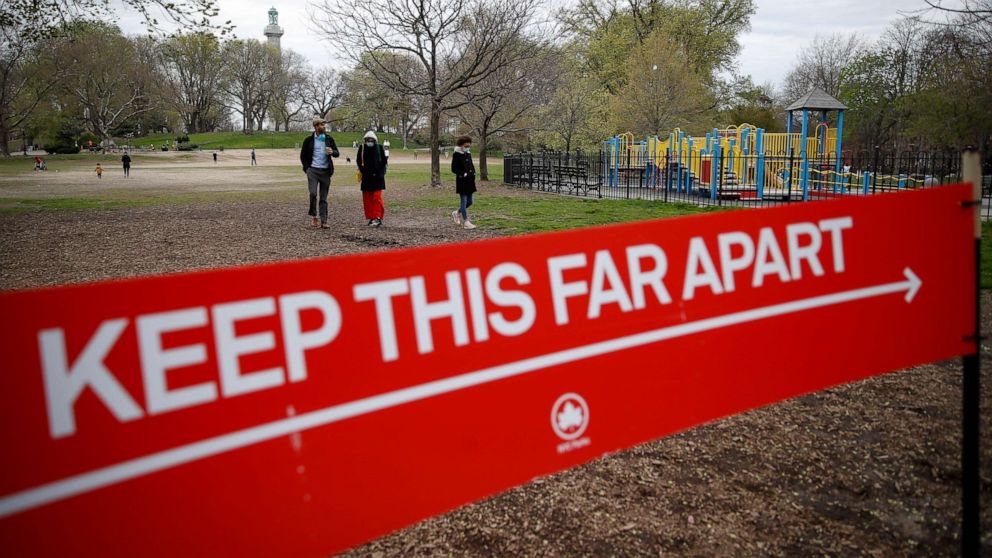





A global pandemic of the novel coronavirus has infected close to 2 million people worldwide.
More than 126,000 people across the globe have died from COVID-19, the disease caused by the new respiratory virus, according to data compiled by the Center for Systems Science and Engineering at Johns Hopkins University. The actual numbers are believed to be much higher due to testing shortages, many unreported cases and suspicions that some governments are hiding the scope of their nations’ outbreaks.
Since the first cases were detected in China in December, the United States has become the worst-affected nation, with more than 609,000 diagnosed cases and at least 26,057 deaths.
The number of cases in New York state alone is higher than in any single country outside the U.S.
Tune into ABC at 1 p.m. ET and ABC News Live at 4 p.m. ET every weekday for special coverage of the novel coronavirus with the full ABC News team, including the latest news, context and analysis.
Here’s how the news is developing today. All times Eastern. Please refresh this page for updates.
6:15 a.m.: Russia reports its largest single-day increase in new cases
Russia on Wednesday reported a record number of new cases of the novel coronavirus.
The Russian government registered 3,388 new cases in the past 24 hours — the country’s biggest single-day jump yet.
There are now 24,490 diagnosed cases of COVID-19 across Russia, and at least 198 people have died from the disease.
Moscow, with a population of more than 12 million people, is by far the hardest-hit city in the country.
5:42 a.m.: Bill Gates warns freezing funding for WHO ‘is as dangerous as it sounds’
Microsoft founder and billionaire philanthropist Bill Gates took to Twitter early Wednesday to denounce U.S. President Donald Trump’s decision to freeze American funding to the World Health Organization.
The United States is, by far, the single largest financial contributor to the WHO, and Gates said the United Nations’ health agency is needed “now more than ever.”
“Halting funding for the World Health Organization during a world health crisis is as dangerous as it sounds,” Gates tweeted. “Their work is slowing the spread of COVID-19 and if that work is stopped no other organization can replace them.”
Trump announced Tuesday that he would cut U.S. contributions to the WHO, pending a review into its handling of the coronavirus pandemic.
The president claimed the WHO mismanaged the outbreak response and specifically laid blame on the organization’s lack of support for his ban on travel from China when the outbreak began.
“They were very much opposed to what we did,” Trump said during Tuesday’s daily briefing.
The president said he will have conversations with other health officials around the world about where the funds earmarked for the WHO would go. He did not rule out restoring the money to the organization.
Trump’s announcement is likely to set up a battle with Congress, which controls funding for the Geneva-based international body.
The WHO started sounding the alarm over the novel coronavirus outbreak in China in mid-January and then designated it a global health emergency on Jan. 30. On March 11, the organization declared the outbreak a pandemic after the virus had spread to every continent except Antarctica.
3:30 a.m.: Social distancing measures may be necessary into 2022, researchers say
People around the world may need to continue practicing some level of social distancing through 2022 to contain the novel coronavirus pandemic in the absence of an effective treatment or vaccine, or unless hospital capacity is increased, according to a new study.
In the study published Tuesday in the journal Science, researchers from the Harvard T.H. Chan School of Public Health warned that their projections indicate there would be a large resurgence of infection if social distancing measures are lifted all at once, potentially delaying the epidemic’s peak and exacerbating the load on critical care resources.
The researchers used data from the United States to model transmission of other coronaviruses in temperate regions and to project possible scenarios of COVID-19 infection through the year 2025.
“Less effective one-time distancing efforts may result in a prolonged single-peak epidemic, with the extent of strain on the healthcare system and the required duration of distancing depending on the effectiveness,” the study’s authors wrote. “Intermittent distancing may be required into 2022 unless critical care capacity is increased substantially or a treatment or vaccine becomes available.”
Effective treatments and vaccines may take months to years to develop and test, leaving non-pharmaceutical interventions as the only immediate means of curbing the spread of infection.
What to know about coronavirus:
If immunity to COVID-19 is not permanent, the virus will likely enter into regular circulation, much like influenza, possibly in annual, biennial or sporadic patterns over the next five years, according to the study. In one model, a 20-week period of social distancing was followed by a resurgence peak that was nearly as great as that of an uncontrolled epidemic.
“The social distancing was so effective that virtually no population immunity was built,” the authors wrote. “The greatest reductions in peak size come from social distancing intensity and duration that divide cases approximately equally between peaks.”
The researchers acknowledged that “prolonged distancing, even if intermittent, is likely to have profoundly negative economic, social, and educational consequences.”
“Our goal in modeling such policies is not to endorse them but to identify likely trajectories of the epidemic under alternative approaches,” the authors wrote. “We do not take a position on the advisability of these scenarios given the economic burden that sustained distancing may impose, but we note the potentially catastrophic burden on the healthcare system that is predicted if distancing is poorly effective and/or not sustained for long enough.”
ABC News’ Alina Lobzina contributed to this report.

